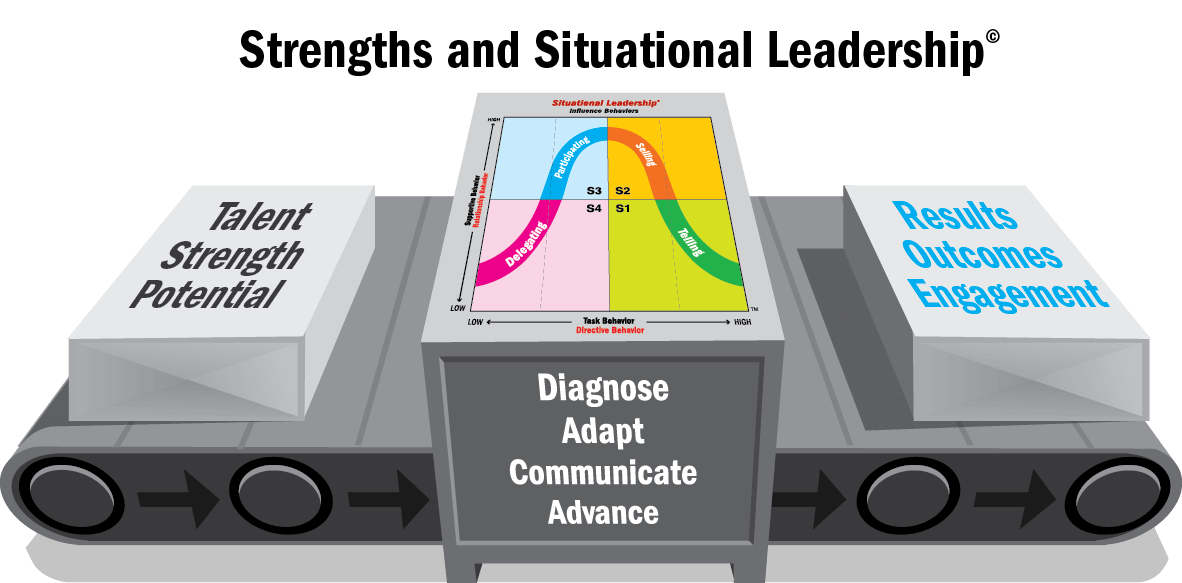Common returns organizations seek when considering a commitment to leadership training are improved productivity and increased levels of employee engagement. While those outcomes are admittedly a function of many things, few are more consequential than the personalized investment good leaders make with those they attempt to influence.
In short, effective leaders find out what makes people tick: what they truly enjoy about their work; what they wish were different; how their work drives them to succeed.
With those thoughts in mind reflect for just a minute on the best manager you’ve ever had. Ask yourself:
- How well did you really know them?
- How well did they really know you?
There is a bond of professional intimacy that usually develops under thoughtful leadership that fortifies the connection and transparency between leader and follower. This bond allows team members to express themselves and their talents in individual ways while feeling secure in the notion that everyone is working together toward something worthwhile. When you, as a leader, find yourself in that sweet spot, active and intentional engagement with employees and coworkers can uncover a treasure trove of hidden talents and strengths.
Strength Theory
This is the basis of strength theory (or strength-centered management). This approach emphasizes the importance of recognizing what people do well and assisting accelerated growth in those areas as opposed to concentrating on a person’s “arenas of struggle” with the objective of helping them reach an acceptable standard.
What Is Strength Theory
Strength-centered management works toward using those strengths for the long-term development of the team as a whole in productivity and performance, but also in each individual’s personal development. Your team members can learn to identify those strengths within them that greatly enhance their capability to accomplish their goals and performance objectives at work and in life.
The Role Of Ability & Capability
This is where it is critical to understand the difference between ability and capability.
At The Center for Leadership Studies, we define ability as knowledge, or experience and skill in action. That translates to an individual currently performing a specific task at a sustained, acceptable level. That’s different from capability which can be thought of as potential. Potential can be thought of as a set of capabilities you possess that haven’t yet been realized or “unleashed” to their full capacity. Capability and potential are synonymous terms.
To cultivate a person’s potential is to develop their innate strengths into skills that can be discernibly performed. To do that, it is critical to connect or align those innate strengths with the development of skills related to the specific tasks that make up an individual’s job, role or function. In short, by tying talents to tasks, you accelerate the translation of capability into ability.
The Role Of Situational Leadership® In Strength Theory
In that regard, the four competencies of Situational Leadership® can be leveraged by leaders as an objective framework to help facilitate that growth and help transform potential, natural talent or innate strengths into a skill-set that consistently produces meaningful results and high levels of employee engagement.
Situational Leadership® Competencies
Those leadership competencies are:
- Diagnosing – Recognizing the talent an individual brings to a task and objectively assessing the gap between that potential and his/her task-specific Performance Readiness® (i.e., the degree to which this person is currently performing to standard)
- Adapting – Identifying a leadership/influence approach that aligns with the diagnosis and provides the highest probability of success (i.e., Directing? Explaining? Facilitating? Empowering?)
- Communicating – Implementing the approach that focuses strengths/talent/capability/potential on task accomplishment
- Advancing – Realizing that transforming raw talent, natural strengths or potential into task-specific ability and willingness is how situational leaders add value, deliver results and cultivate high levels of employee engagement
A fundamental premise of strength-centered management is that all of us have the potential to be great at something. Situational Leadership® is a tool leaders can tangibly employ to align individual strengths with organizational goals in that regard.
Situational Leadership® and Workplace Safety
When the leader takes time to assess ability and sets a training plan to close that gap for a person then continues that conversation around willingness to better understand what the strongest felt needs (SFN) or drivers of that person are, that person is seen, heard, valued and engaged. This is safety.
It is by showing interest and compassion through JEDI (just, equitable, diverse, and inclusive) behaviors that leaders will create a safe and fulfilling working environment.
APPLICATION CHALLENGE
- Recognizing individual potential/talent/strengths is related to (but still distinguished from) “assessing current levels of Performance Readiness®.” With that thought in mind:
- Identify someone on your team that has “yet-to-be-realized potential” and develop an influence strategy focused on cultivating that capability into high levels of performance and engagement by taking into account their innate strengths and task-specific Performance Readiness®.


